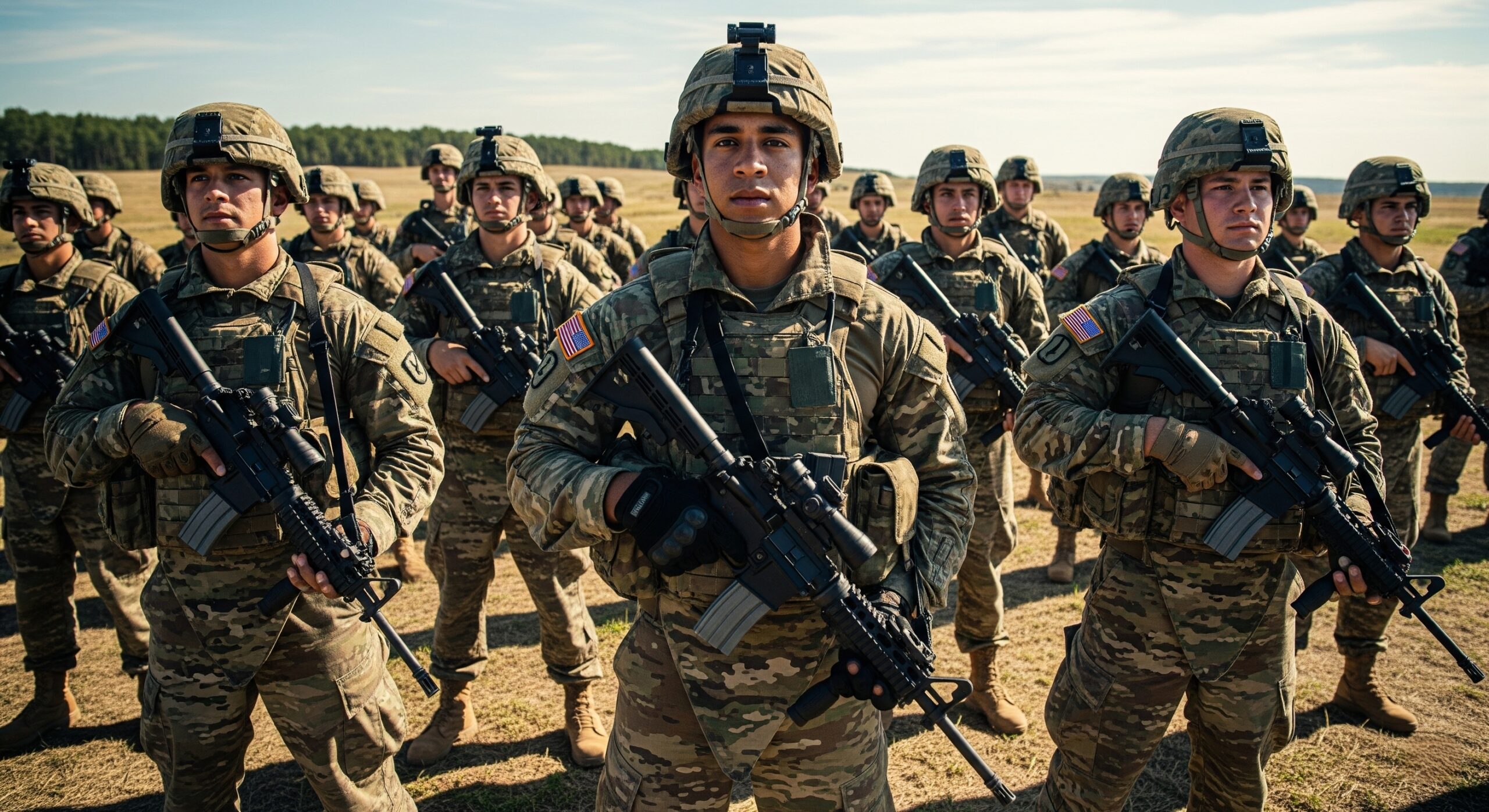In a world where global security and geopolitical influence are paramount, a nation’s military strength is a key indicator of its power. The size of an army, measured by active-duty personnel, often reflects a country’s commitment to defense, its strategic priorities, and its ability to project influence on a global scale. However, military might isn’t just about numbers—it’s also about technology, training, logistics, and geopolitical strategy. In this article, we’ll explore the top 10 largest armies in the world as of 2025, based on active military personnel, and dive into what makes each of these forces formidable. From massive defense budgets to cutting-edge technology, these nations showcase their military prowess in unique ways. Let’s take a closer look at the giants of global defense.
𝟭. 𝗖𝗵𝗶𝗻𝗮: 𝗧𝗵𝗲 𝗣𝗲𝗼𝗽𝗹𝗲’𝘀 𝗟𝗶𝗯𝗲𝗿𝗮𝘁𝗶𝗼𝗻 𝗔𝗿𝗺𝘆 (𝗣𝗟𝗔)
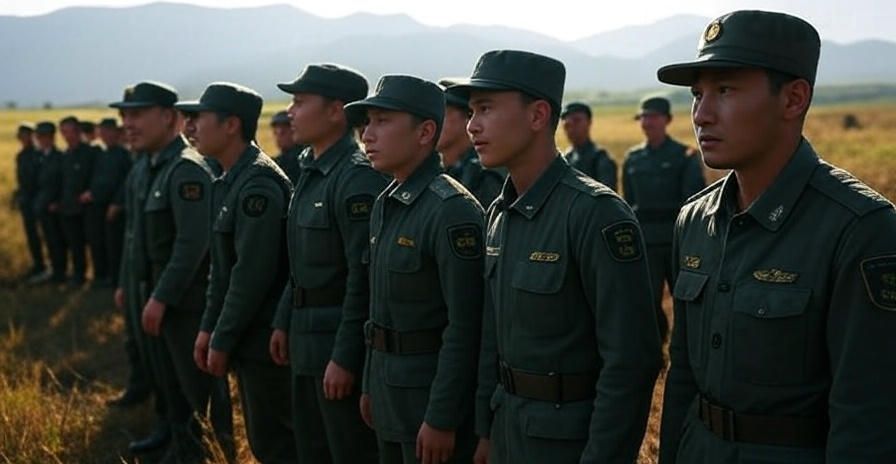
Active Personnel: Approximately 2,035,000
Why It’s Number One: China boasts the largest army in the world, with over 2 million active-duty personnel. The People’s Liberation Army (PLA) is the military arm of the Chinese Communist Party and operates under a centralized command structure. It includes the Ground Force, Navy, Air Force, Rocket Force, and Strategic Support Force, which focuses on cyber and space operations. Strengths and Capabilities:
China’s massive manpower is backed by a defense budget of around $314 billion in 2024, the second-largest in the world. The PLA has undergone rapid modernization, investing in hypersonic missiles, stealth aircraft like the J-20, and a growing navy with aircraft carriers. Its focus on cyber warfare and space capabilities positions it as a rising global power. The PLA’s five theater commands ensure integrated joint operations, making it highly adaptable. While its last major conflict was a border skirmish with Vietnam in 1979, China’s military buildup, especially in the South China Sea, signals its ambition for regional dominance and global influence.
𝟮. 𝗜𝗻𝗱𝗶𝗮: 𝗧𝗵𝗲 𝗜𝗻𝗱𝗶𝗮𝗻 𝗔𝗿𝗺𝗲𝗱 𝗙𝗼𝗿𝗰𝗲𝘀
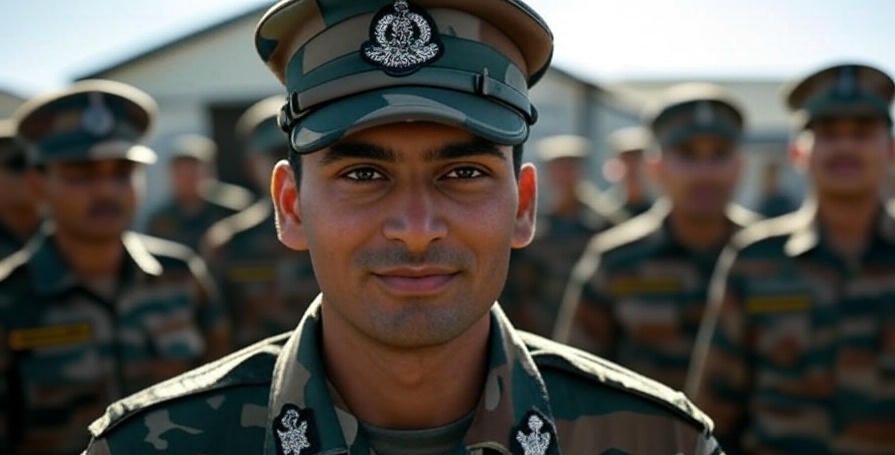
Active Personnel: Approximately 1,475,750
Why It’s Number Two: India’s armed forces are the second-largest in the world, with nearly 1.5 million active personnel and an additional 960,000 reservists. The Indian Army, Navy, and Air Force form a robust tri-service structure, making India a dominant force in South Asia. Strengths and Capabilities:
India’s military strength is rooted in its large population and all-volunteer force, which ensures high motivation and professionalism. With a defense budget of around $80 billion, India invests in indigenous programs like the Tejas fighter jet and Arjun tanks as part of its “Make in India” initiative. The country’s nuclear triad—land, air, and sea-based nuclear capabilities—adds strategic depth. India’s military is experienced in high-altitude warfare, particularly along its borders with Pakistan and China, and plays a significant role in peacekeeping missions. Its navy is expanding to secure maritime interests in the Indian Ocean.
𝟯. 𝗨𝗻𝗶𝘁𝗲𝗱 𝗦𝘁𝗮𝘁𝗲𝘀: 𝗧𝗵𝗲 𝗨.𝗦. 𝗔𝗿𝗺𝗲𝗱 𝗙𝗼𝗿𝗰𝗲𝘀
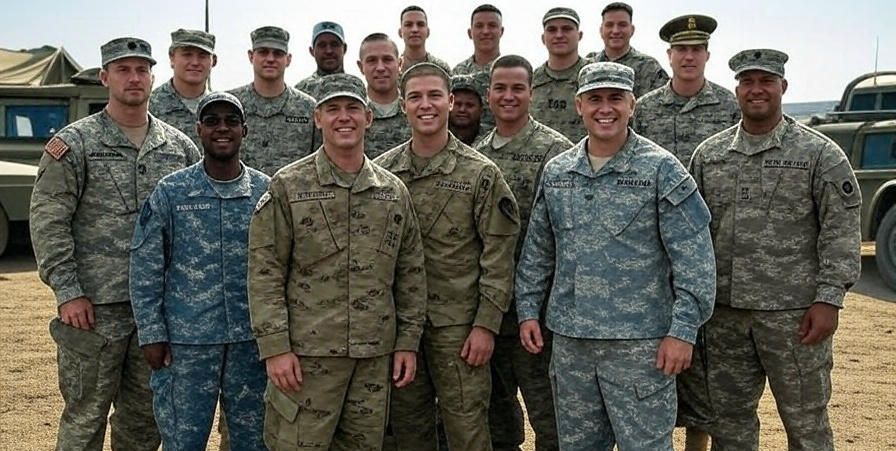
Active Personnel: Approximately 1,326,050
Why It’s Number Three: Despite having fewer active personnel than China and India, the United States is widely regarded as the world’s most powerful military due to its unmatched technological edge and global reach. The U.S. military includes the Army, Navy, Marine Corps, Air Force, Space Force, and Coast Guard. Strengths and Capabilities:
With a defense budget of $849 billion in 2025, the U.S. spends more on its military than the next 10 countries combined. This funds advanced technologies like the F-35 stealth fighter, nuclear-powered aircraft carriers (11 in total), and a global network of over 750 bases. The U.S. leads in arms exports, with $318.7 billion in equipment sold in 2024. Its six regionally aligned combatant commands and elite Special Operations units ensure unparalleled global influence. Post-2001 campaigns in Afghanistan and Iraq have driven reforms, focusing on long-range fires, network warfare, and soldier lethality.
𝟰. 𝗥𝘂𝘀𝘀𝗶𝗮: 𝗧𝗵𝗲 𝗥𝘂𝘀𝘀𝗶𝗮𝗻 𝗔𝗿𝗺𝗲𝗱 𝗙𝗼𝗿𝗰𝗲𝘀
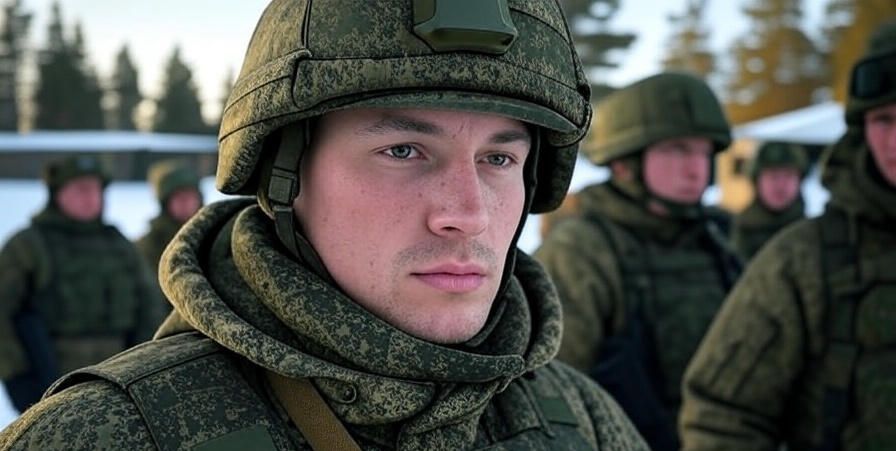
Active Personnel: Approximately 1,110,000
Why It’s Number Four: Russia’s military, with over 1.1 million active personnel and 2.5 million reservists, remains a global powerhouse despite challenges in recent conflicts. The Russian Armed Forces include the Ground Forces, Navy, Aerospace Forces, and Strategic Missile Forces. Strengths and Capabilities:
Russia’s military strength lies in its massive nuclear arsenal (over 5,900 warheads) and the world’s largest tank fleet (12,950). Its $84 billion defense budget supports modernization, with 70% of its arsenal expected to be cutting-edge by 2030. Russia fields advanced aircraft like the Su-57 and a powerful submarine fleet. However, the ongoing Russo-Ukrainian War has exposed weaknesses in leadership and logistics. Despite this, Russia’s strategic alliances, such as with North Korea, and its cyber warfare capabilities maintain its global influence.
𝟱. 𝗡𝗼𝗿𝘁𝗵 𝗞𝗼𝗿𝗲𝗮: 𝗧𝗵𝗲 𝗞𝗼𝗿𝗲𝗮𝗻 𝗣𝗲𝗼𝗽𝗹𝗲’𝘀 𝗔𝗿𝗺𝘆 (𝗞𝗣𝗔)
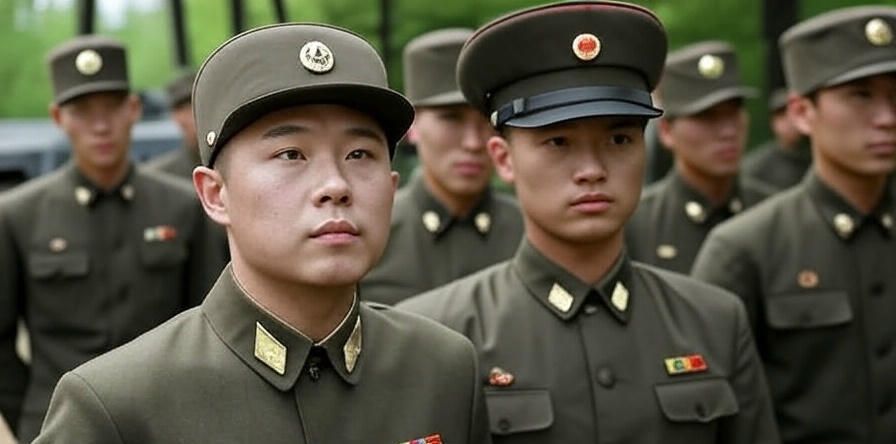
Active Personnel: Approximately 1,280,000
Why It’s Number Five: North Korea’s Korean People’s Army (KPA) is the fifth-largest standing force, with 1.28 million active troops and 600,000 reservists. Universal conscription, requiring men to serve for 10 years and women until age 23, sustains its size. Strengths and Capabilities:
Despite a relatively small defense budget of $4 billion (about a quarter of GDP), North Korea offsets technological limitations with sheer manpower, extensive artillery, and a growing nuclear arsenal. The KPA includes Ground Forces, Navy, Air and Anti-Air Force, Strategic Missile Force, and Special Operations Forces. Its massive special forces corps and ballistic missile program enhance its regional threat. North Korea’s military industry supports exports, such as artillery to Russia, and its isolationist policies prioritize militarization.
𝟲. 𝗨𝗸𝗿𝗮𝗶𝗻𝗲: 𝗧𝗵𝗲 𝗨𝗸𝗿𝗮𝗶𝗻𝗶𝗮𝗻 𝗔𝗿𝗺𝗲𝗱 𝗙𝗼𝗿𝗰𝗲𝘀
Active Personnel: Approximately 800,000
Why It’s Number Six: Ukraine’s military has grown significantly due to the ongoing conflict with Russia, with around 800,000 active personnel as of 2024. This expansion reflects its response to existential threats. Strengths and Capabilities:
Ukraine’s military has modernized rapidly since 2014, supported by Western aid, including advanced systems like HIMARS and Javelin missiles. Its forces are battle-hardened, with experience in conventional and asymmetric warfare. The army focuses on territorial defense, with significant contributions from the Kharkiv region. While lacking the scale of nuclear or naval power of larger nations, Ukraine’s resilience and adaptability make it a formidable force in Eastern Europe.
𝟳. 𝗣𝗮𝗸𝗶𝘀𝘁𝗮𝗻: 𝗧𝗵𝗲 𝗣𝗮𝗸𝗶𝘀𝘁𝗮𝗻 𝗔𝗿𝗺𝗲𝗱 𝗙𝗼𝗿𝗰𝗲𝘀
Active Personnel: Approximately 660,000
Why It’s Number Seven: Pakistan’s military, with 660,000 active personnel and 1 million reservists, ranks seventh globally. Its Army, Navy, and Air Force are supported by paramilitary units, ensuring robust defense capabilities. Strengths and Capabilities:
Pakistan’s military strength lies in its nuclear capabilities and strategic partnerships, particularly with China. Its $10 billion defense budget supports over 3,700 tanks and 1,400 aircraft. The military focuses on regional deterrence, especially against India, and invests in missile technology and domestic defense production. Pakistan’s experience in counterterrorism and its strategic location enhance its geopolitical significance.
𝟴. 𝗜𝗿𝗮𝗻: 𝗧𝗵𝗲 𝗜𝗿𝗮𝗻𝗶𝗮𝗻 𝗔𝗿𝗺𝗲𝗱 𝗙𝗼𝗿𝗰𝗲𝘀
Active Personnel: Approximately 610,000
Why It’s Number Eight: Iran’s military, including the regular forces (Artesh) and the Islamic Revolutionary Guard Corps, totals about 610,000 active personnel. It is a major power in the Middle East. Strengths and Capabilities:
Iran’s military focuses on regional influence, with the largest missile arsenal in the Middle East and the fifth-largest rocket artillery globally. Its $10 billion defense budget supports a sizable navy and air force, though much of its equipment is aging. The Revolutionary Guard’s unconventional warfare capabilities, including support for proxy groups like Hezbollah, amplify Iran’s influence.
𝟵. 𝗦𝗼𝘂𝘁𝗵 𝗞𝗼𝗿𝗲𝗮: 𝗧𝗵𝗲 𝗥𝗲𝗽𝘂𝗯𝗹𝗶𝗰 𝗼𝗳 𝗞𝗼𝗿𝗲𝗮 𝗔𝗿𝗺𝗲𝗱 𝗙𝗼𝗿𝗰𝗲𝘀
Active Personnel: Approximately 600,000
Why It’s Number Nine: South Korea’s military, with 600,000 active personnel and 3.2 million reservists, is one of Asia’s most advanced, driven by tensions with North Korea. Strengths and Capabilities:
South Korea’s $50 billion defense budget supports a high-tech military with over 133,000 vehicles and 739 helicopters, including 112 attack helicopters. Mandatory conscription ensures a large reserve force, while investments in fighter jets, anti-submarine warfare, and cyber capabilities enhance readiness. The Republic of Korea Navy and Air Force maintain air and maritime superiority over the Korean Peninsula.
𝟭𝟬. 𝗩𝗶𝗲𝘁𝗻𝗮𝗺: 𝗧𝗵𝗲 𝗣𝗲𝗼𝗽𝗹𝗲’𝘀 𝗔𝗿𝗺𝘆 𝗼𝗳 𝗩𝗶𝗲𝘁𝗻𝗮𝗺
Active Personnel: Approximately 600,000
Why It’s Number Ten: Vietnam’s People’s Army of Vietnam (PAVN) has 600,000 active personnel and over 5 million reservists, bolstered by mandatory conscription. Strengths and Capabilities:
Vietnam’s military strength stems from its history of resilience, notably during the Vietnam War. Its $6 billion defense budget supports a large ground force and tactical use of complex terrain. While less advanced technologically, Vietnam’s focus on combat readiness and territorial integrity ensures its regional influence. The PAVN’s large reserve pool makes it one of the world’s largest total forces when mobilized.
𝗖𝗼𝗻𝗰𝗹𝘂𝘀𝗶𝗼𝗻
The top 10 largest armies in the world—China, India, the United States, Russia, North Korea, Ukraine, Pakistan, Iran, South Korea, and Vietnam—represent a diverse range of military strategies and priorities. From China’s massive modernization to the U.S.’s technological dominance and Ukraine’s battle-hardened resilience, each nation’s military reflects its unique geopolitical context. As global military spending continues to rise, reaching $2.718 trillion in 2024, these armies will shape the future of international security and influence.
Whether through sheer manpower, advanced technology, or strategic alliances, these nations demonstrate that military might is about more than just numbers—it’s about readiness, adaptability, and the will to defend national interests. For readers interested in global affairs, understanding these forces offers insight into the complex dynamics of power in the 21st century.

